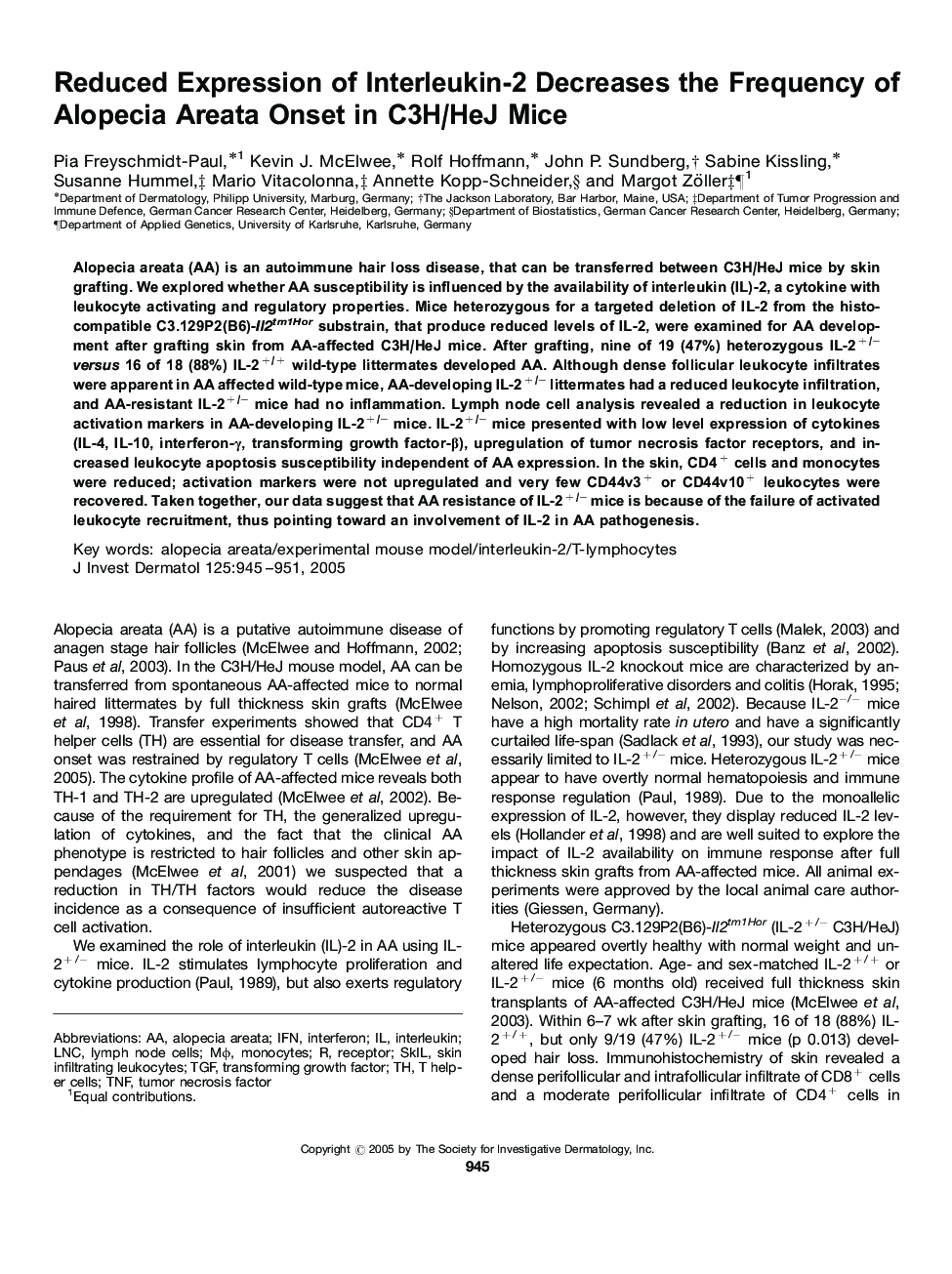| Article ID | Journal | Published Year | Pages | File Type |
|---|---|---|---|---|
| 9230602 | Journal of Investigative Dermatology | 2005 | 7 Pages |
Abstract
Alopecia areata (AA) is an autoimmune hair loss disease, that can be transferred between C3H/HeJ mice by skin grafting. We explored whether AA susceptibility is influenced by the availability of interleukin (IL)-2, a cytokine with leukocyte activating and regulatory properties. Mice heterozygous for a targeted deletion of IL-2 from the histocompatible C3.129P2(B6)-Il2tm1Hor substrain, that produce reduced levels of IL-2, were examined for AA development after grafting skin from AA-affected C3H/HeJ mice. After grafting, nine of 19 (47%) heterozygous IL-2+/-versus 16 of 18 (88%) IL-2+/+ wild-type littermates developed AA. Although dense follicular leukocyte infiltrates were apparent in AA affected wild-type mice, AA-developing IL-2+/- littermates had a reduced leukocyte infiltration, and AA-resistant IL-2+/- mice had no inflammation. Lymph node cell analysis revealed a reduction in leukocyte activation markers in AA-developing IL-2+/- mice. IL-2+/- mice presented with low level expression of cytokines (IL-4, IL-10, interferon-γ, transforming growth factor-β), upregulation of tumor necrosis factor receptors, and increased leukocyte apoptosis susceptibility independent of AA expression. In the skin, CD4+ cells and monocytes were reduced; activation markers were not upregulated and very few CD44v3+ or CD44v10+ leukocytes were recovered. Taken together, our data suggest that AA resistance of IL-2+/- mice is because of the failure of activated leukocyte recruitment, thus pointing toward an involvement of IL-2 in AA pathogenesis.
Related Topics
Health Sciences
Medicine and Dentistry
Dermatology
Authors
Pia Freyschmidt-Paul, Kevin J. McElwee, Rolf Hoffmann, John P. Sundberg, Sabine Kissling, Susanne Hummel, Mario Vitacolonna, Annette Kopp-Schneider, Margot Zöller,
